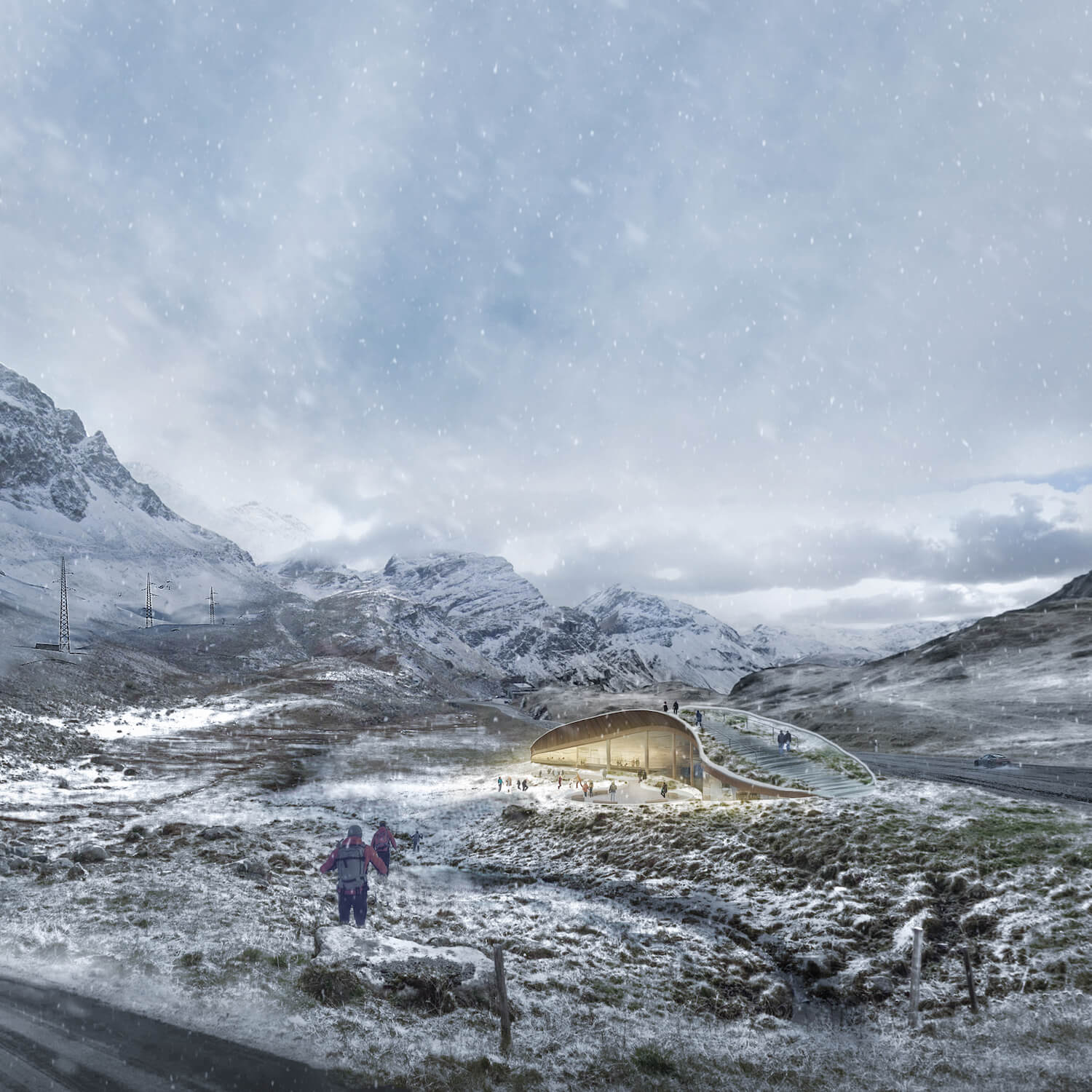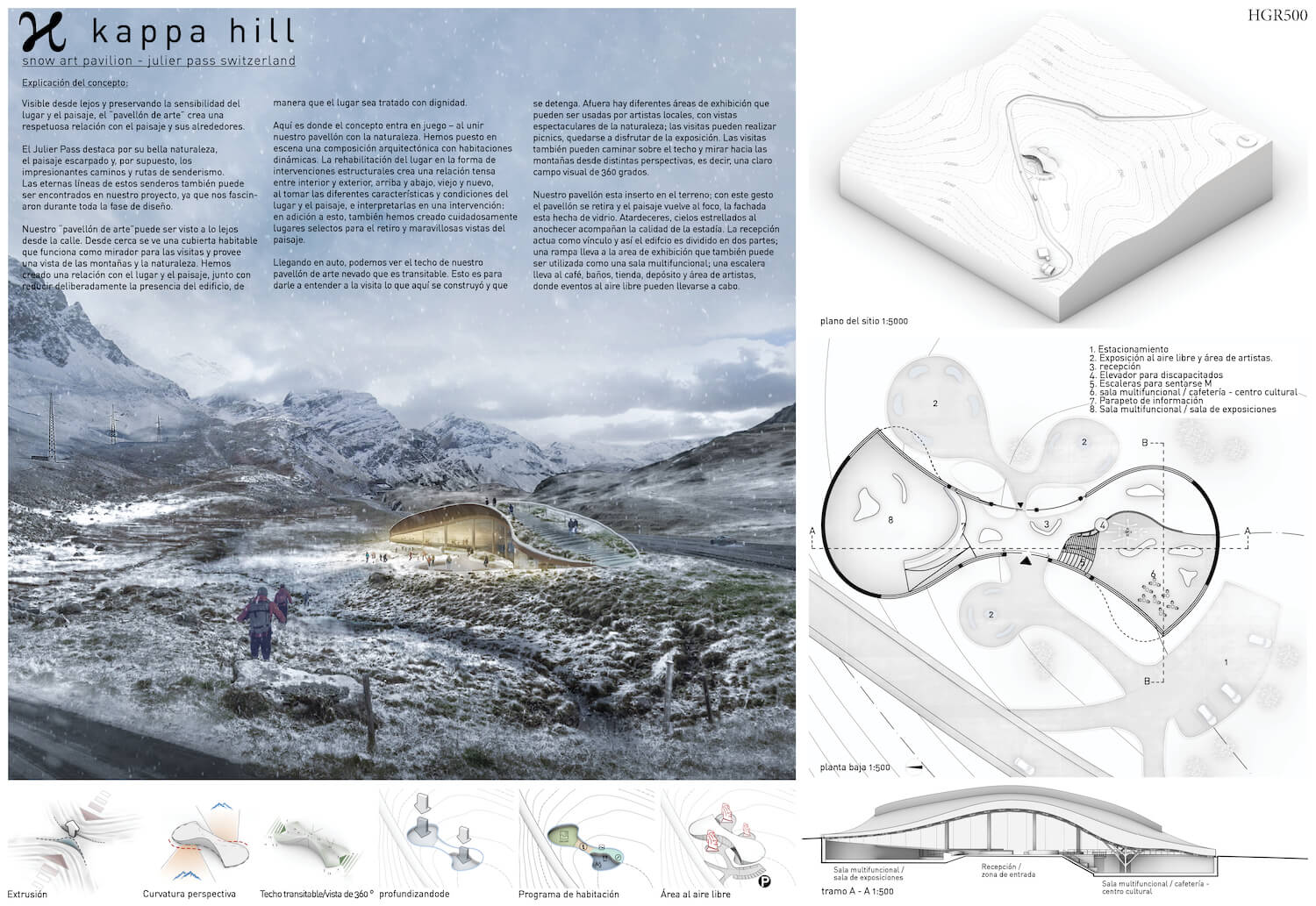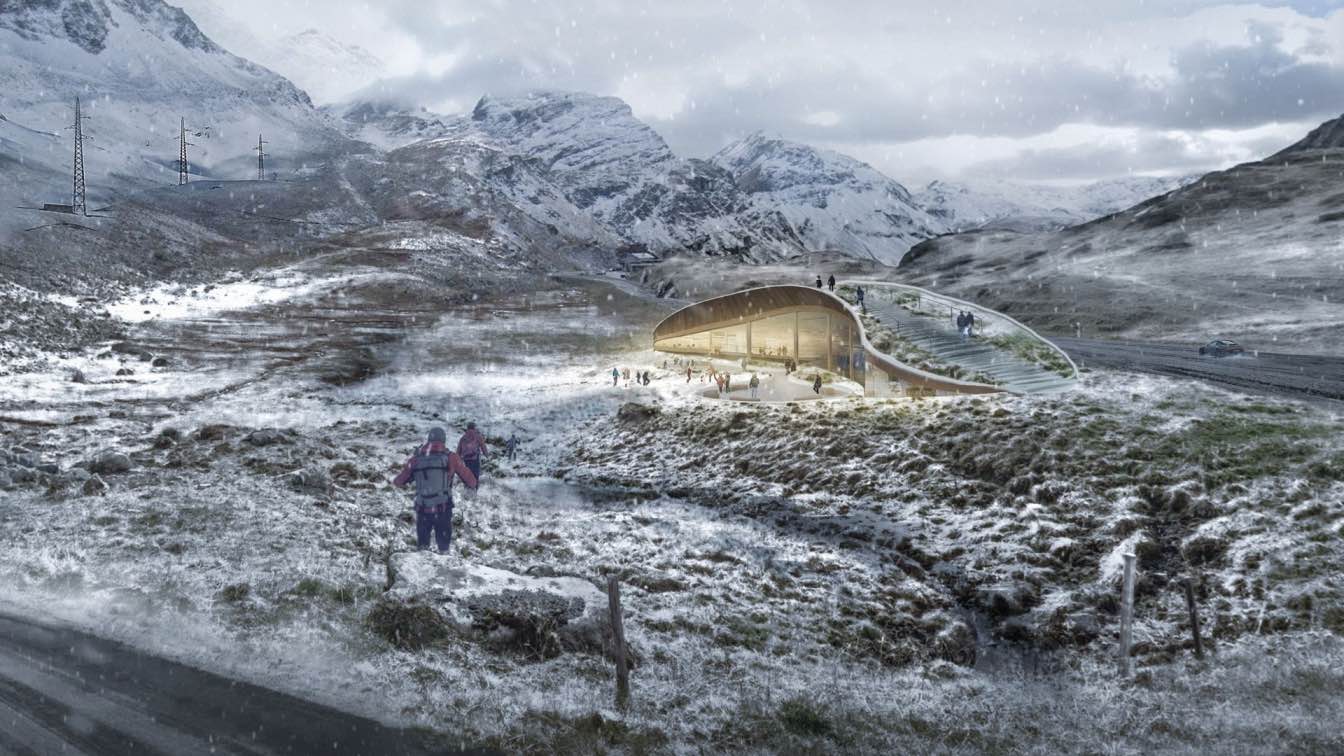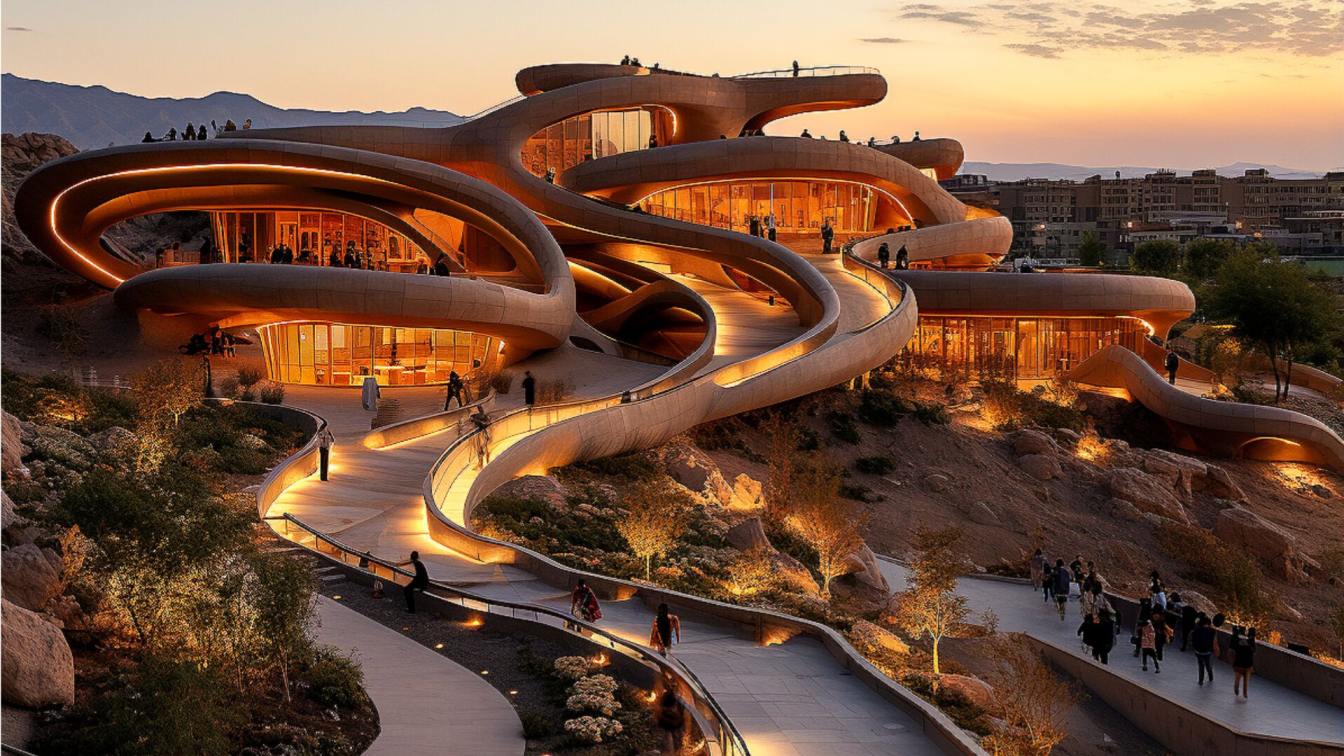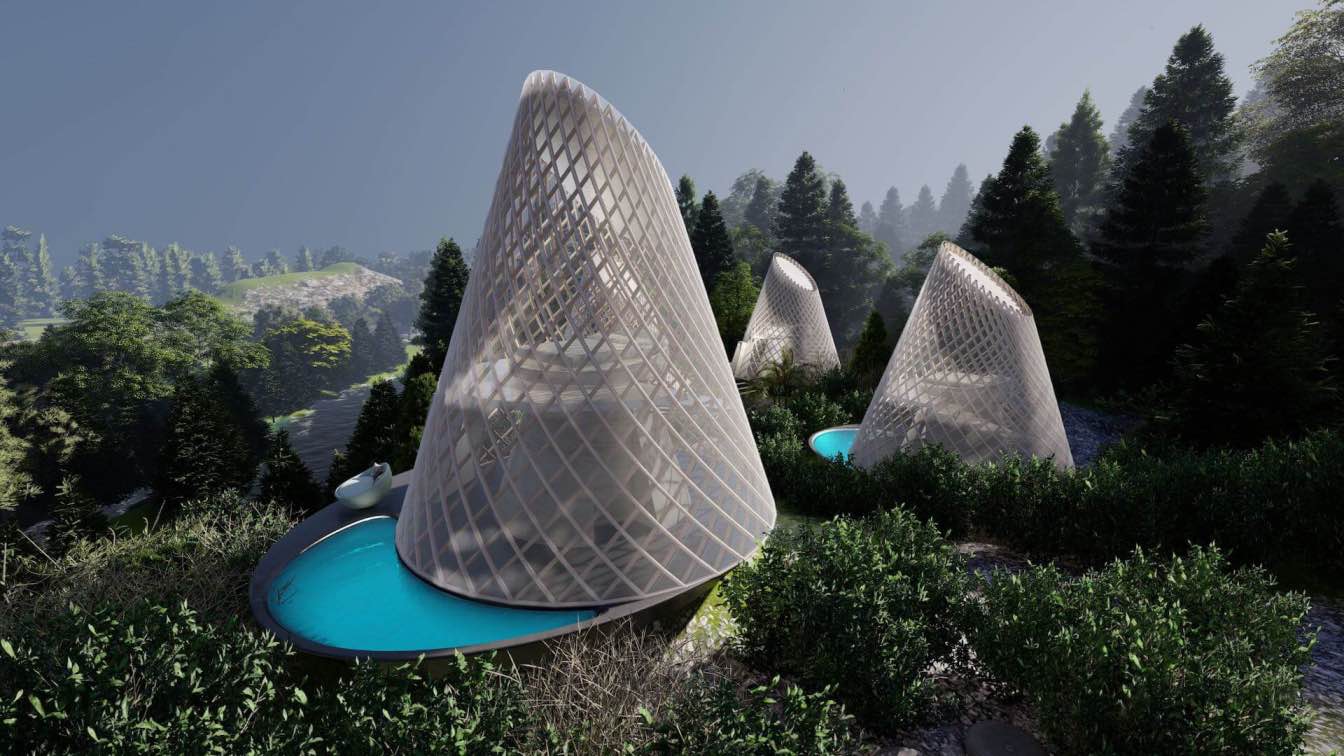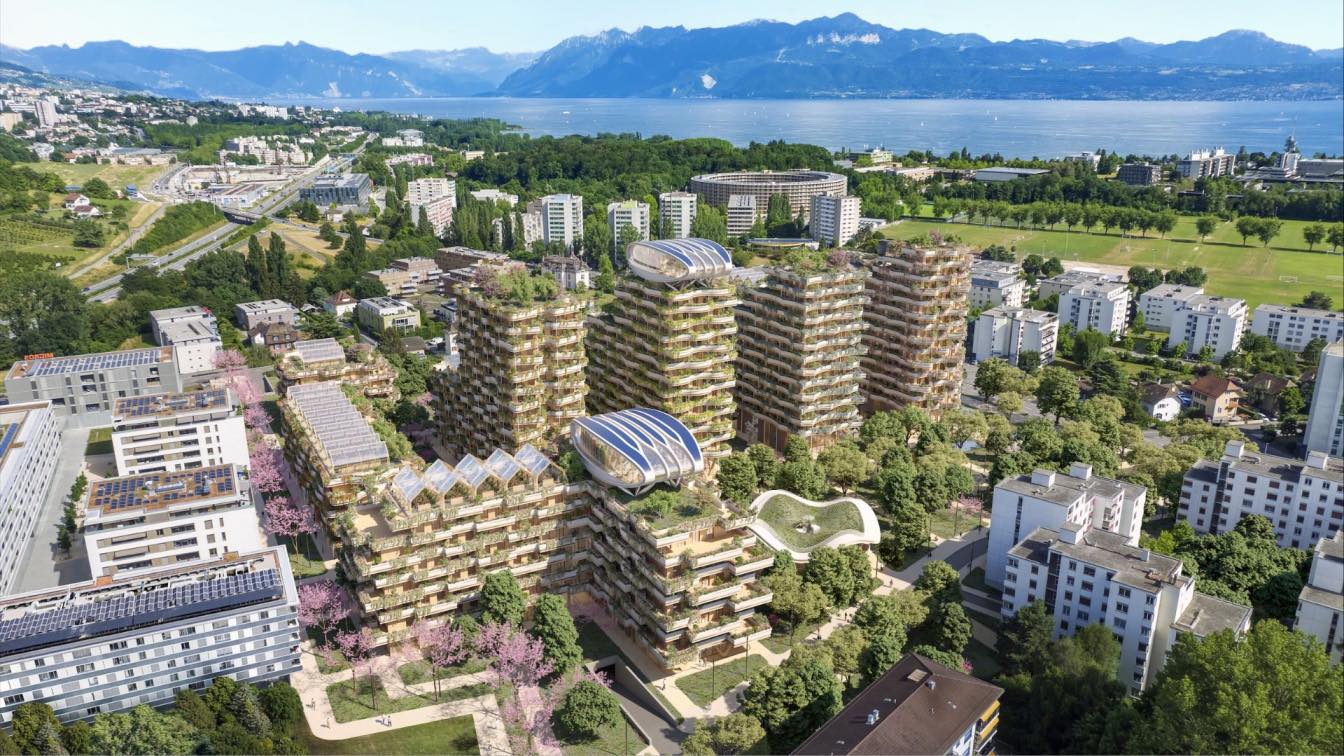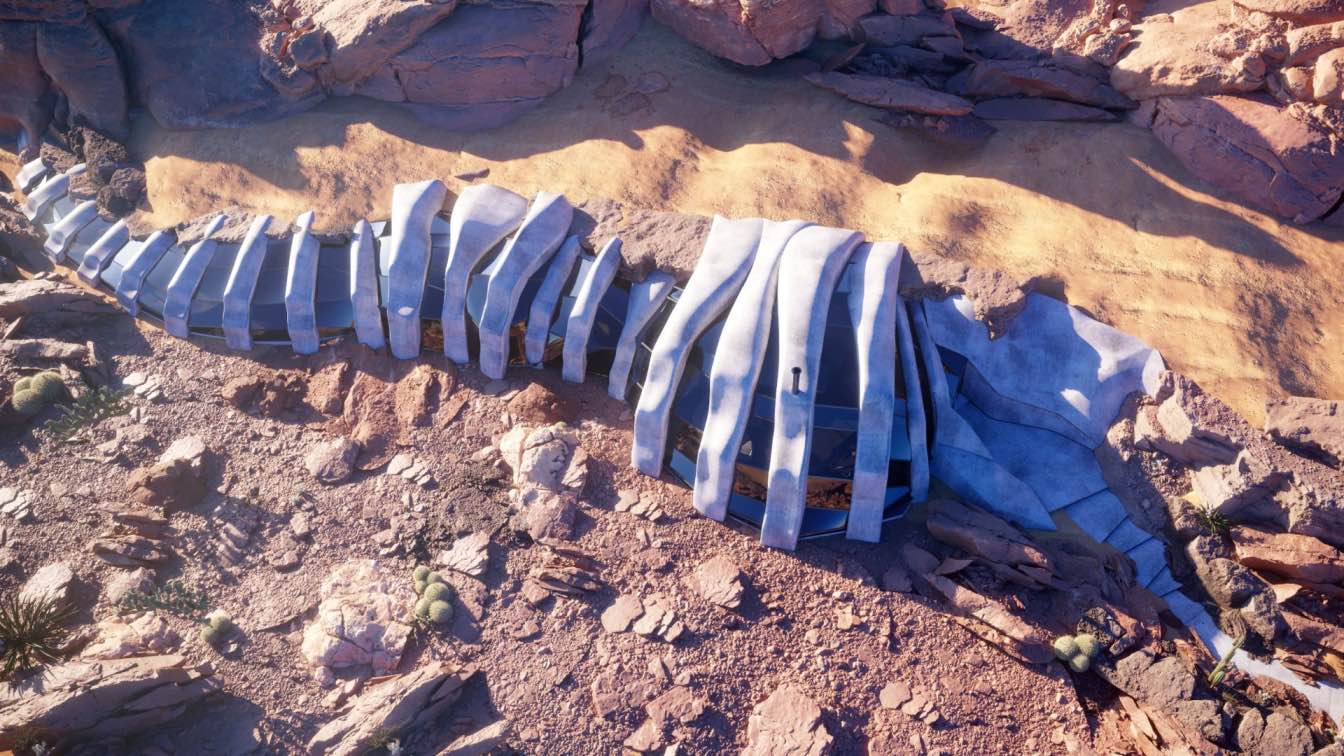Kappa Hill Snow Art Pavilion in Julier Pass, Switzerland by Dill Khan M.Eng and Xian Zhu have been chosen as the 3rd honorable mention of Snow Art Pavilion – AG360 Concursos International Ideas Competition to encourage the preservation of natural resources.
Task from the publisher
The SNOW ART PAVILION, will be an architectural element of contemplation that can be visited by visitors throughout the year and can contain spaces for temporary exhibitions (summer) such as art fairs. Your very presence will become a milestone on the road. The pavilion will have a coffe shop and a viewpoint.
An Art Pavilion will be conceptualized as a cultural and artistic space in the middle of the snowy landscape of the Swiss Alps, next to the Julien Pass mountain pass at 2,300m above sea level.
It will function as an obligatory stop for the rest and contemplation of the visitors who travel the natural landscape by car. Its strategic location will serve as a connection between the Hospice and the Julien Theater located in the area.
It should be designed as a construction that can withstand the incidents of time and easy maintenance. At all times the natural landscape must be prioritized. All architectural elements must be framed in a sustainable environment.
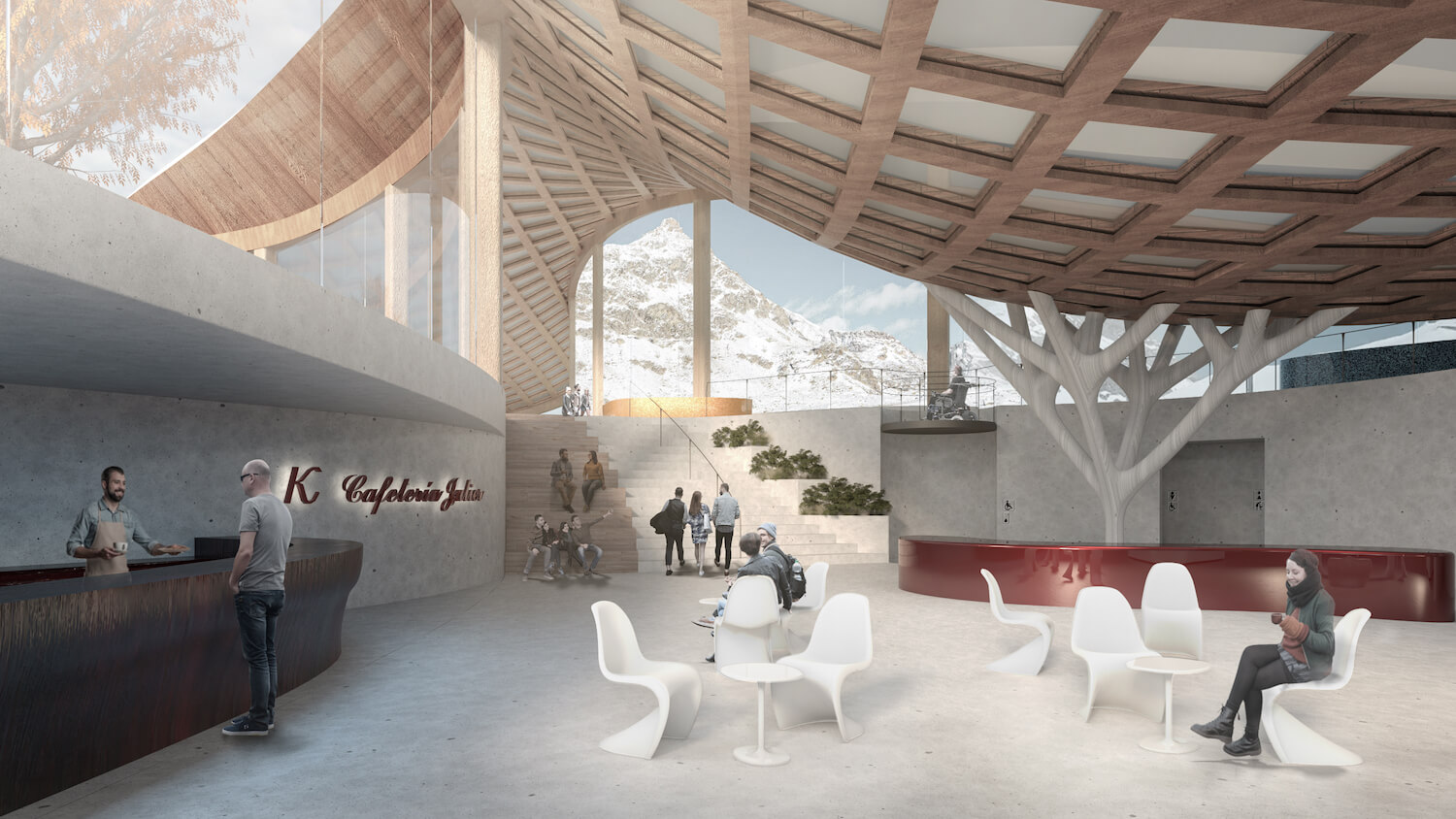
Explanation of the concept:
Visible from afar and preserving the sensitivity of the place and the landscape, the "art pavilion" creates a respectful relationship with the landscape and its surroundings.
The Julier Pass stands out for its beautiful nature, the rugged landscape and, of course, the awesome trails and hiking trails. The eternal lines of these trails can also be found in our project, as they fascinated us throughout the design phase.
Our "art pavilion" can be seen in the distance from the street. From close up, you can see a habitable deck that functions as a viewpoint for visitors and provides a view of the mountains and nature. We have created a relationship with the place and the landscape, along with deliberately reducing the presence of the building, so that the place is treated with dignity.
This is where the concept comes into play - by joining our pavilion with nature. We have staged an architectural composition with dynamic rooms. The rehabilitation of the place in the form of structural interventions creates a strained relationship between inside and outside, up and down, old and new, by taking the different characteristics and conditions of the place and the landscape, and interpreting them in an intervention: In addition to this, we have also carefully created select retreat locations and wonderful landscape views.
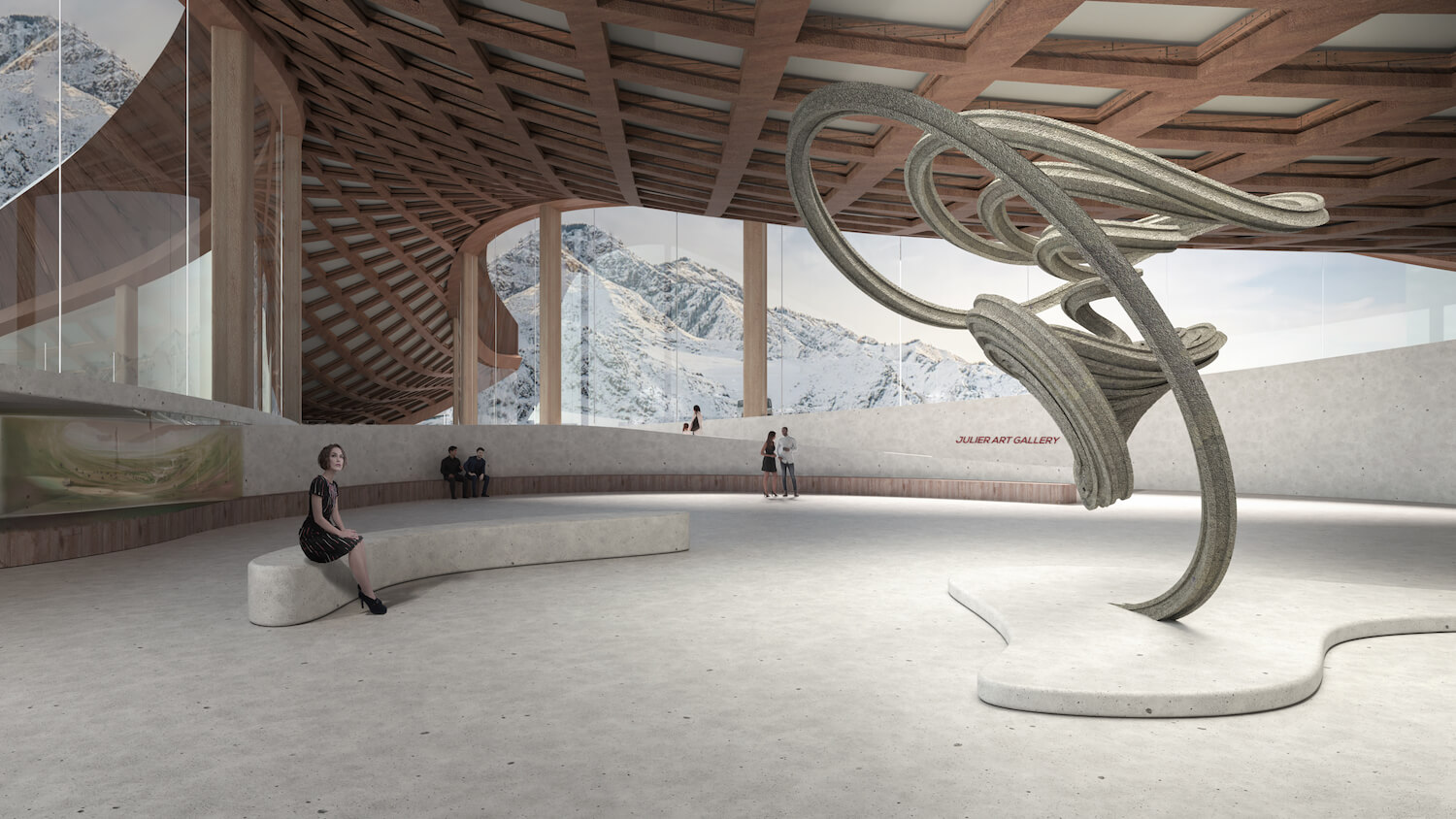
Arriving by car, we can see the roof of our snowy art pavilion that is passable. This is to make the visit understand what was built here and to stop. Outside there are different exhibition areas that can be used by local artists, with views spectacular of nature; Visitors can have picnics, stay to enjoy the exhibition. Visitors can also walk on the roof and look up at the mountains from different perspectives, that is, a clear 360-degree field of view.
Our pavilion is inserted in the land; With this gesture the pavilion is withdrawn and the landscape returns to focus, the façade is made of glass. Sunsets, starry skies at dusk accompany the quality of the stay. The reception acts as a link and thus the building is divided into two parts; a ramp leads to the exhibition area that can also be used as a multifunctional room; a staircase leads to the cafe, restrooms, store, warehouse, and artists' area, where outdoor events can take place.
